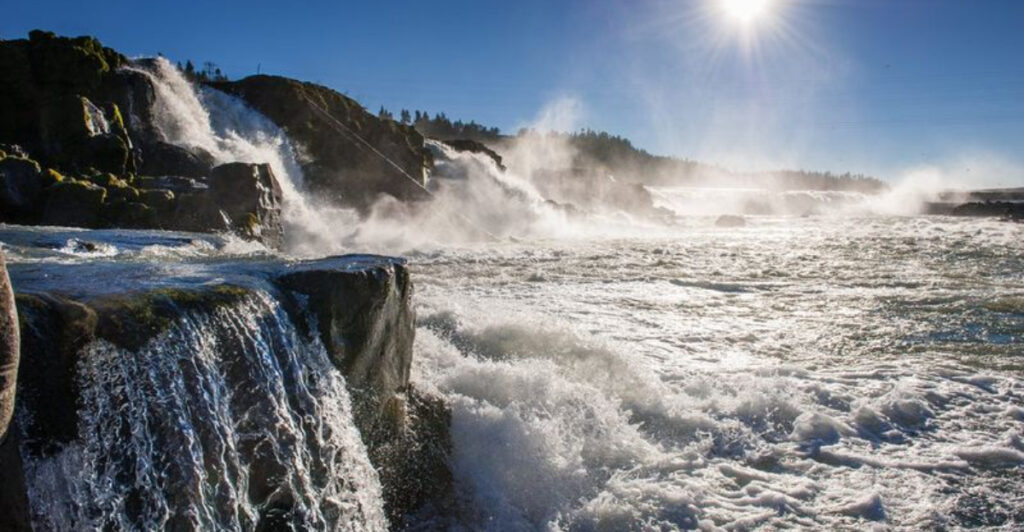Nestled between Portland and Clackamas lies Oregon City, a historic gem where natural power meets pioneer heritage. This riverside community is home to the thundering Willamette Falls, a natural wonder that once fueled the region’s earliest industries. Today, Oregon City blends its rich past with modern charm, offering visitors a unique experience where you can literally hear the roar of a mighty waterfall right from downtown streets.
Thundering Heart: Willamette Falls’ Natural Power
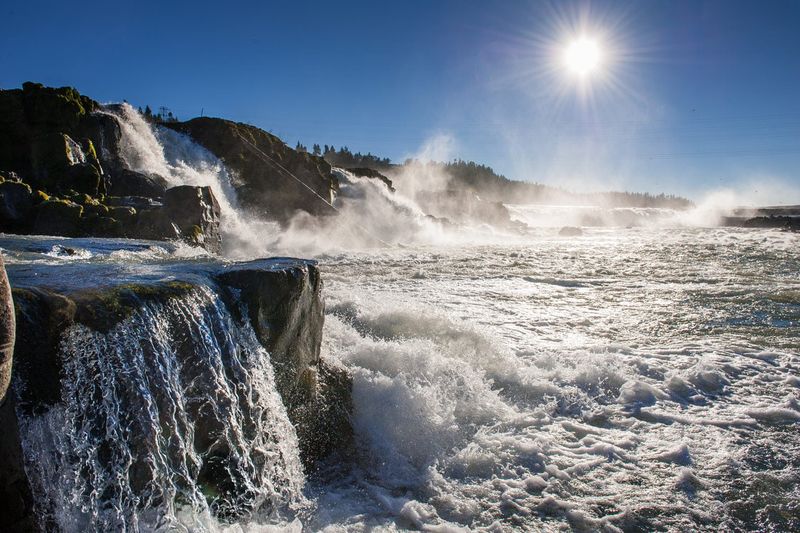
The centerpiece of Oregon City isn’t a building or monument—it’s a force of nature. Willamette Falls drops 42 feet across a massive horseshoe-shaped basalt ledge stretching 1,500 feet wide, making it the Pacific Northwest’s most powerful waterfall by volume.
Native tribes gathered here for thousands of years before settlers arrived, drawn by the abundant salmon runs and spiritual significance of the rushing waters. Early pioneers quickly recognized the falls’ potential, harnessing its might to power the region’s first industries.
Standing at the viewpoints today, you’ll feel the mist and hear the constant thunder that has been the soundtrack to this town since its founding in 1829.
Industrial Legacy: How Water Built a City
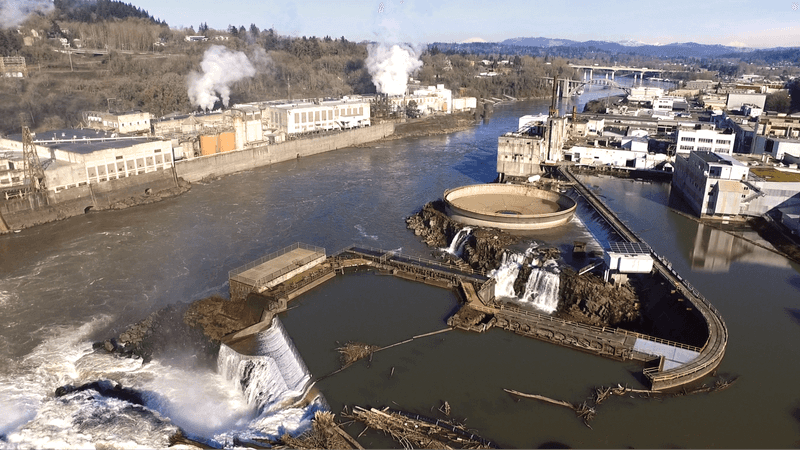
Before Portland became the region’s powerhouse, Oregon City’s mills hummed with activity—all thanks to the falls. The cascading water powered sawmills that processed the region’s towering Douglas firs, flour mills that ground wheat from the fertile Willamette Valley, and the Northwest’s first paper mill.
Old brick buildings and weathered wooden structures still line parts of the riverfront, silent witnesses to the industrial boom. Workers once crowded these streets, their livelihoods tied to the rushing water.
This industrial heritage shaped not just Oregon City but the entire Northwest economy, establishing patterns of development that would define the region for generations.
Riverwalk Revival: Reconnecting with the Water
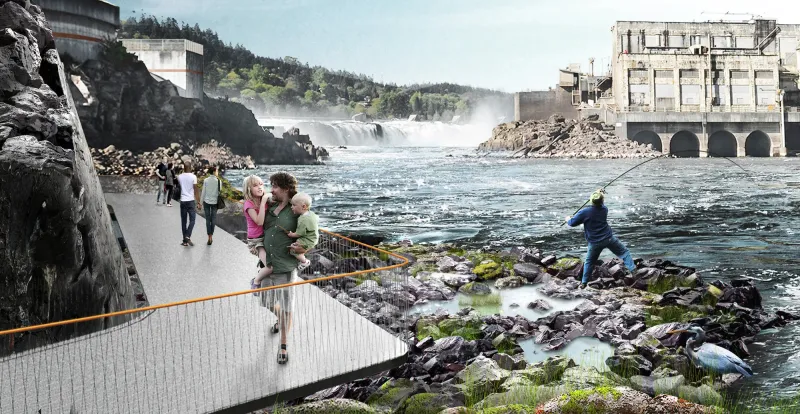
For decades, industrial buildings blocked public access to Willamette Falls. Now, an ambitious transformation is underway. The Willamette Falls Riverwalk project aims to tear down barriers and create public spaces where people can once again experience the majesty of the falls up close.
Designed by world-renowned architects, the plans include elevated walkways that will thread through remnants of historic mill buildings. Visitors will soon enjoy gathering spaces, interpretive displays, and stunning viewpoints that showcase both natural wonder and industrial heritage.
This revitalization represents Oregon City’s future—honoring its past while creating new ways for people to connect with the river that shaped the town.
Ride the Sky: America’s Only Vertical Street
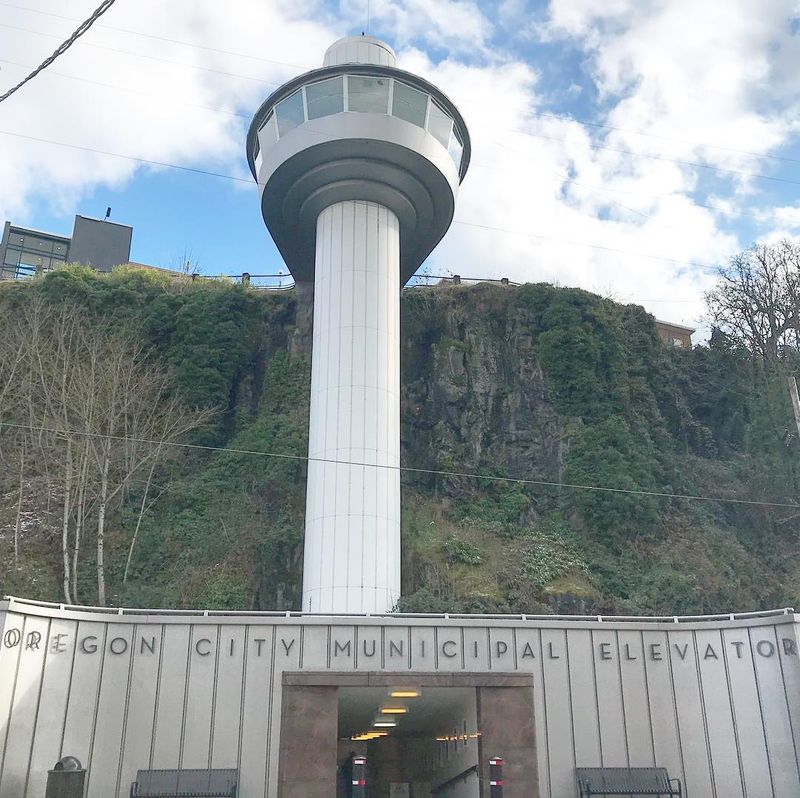
A quirky transportation marvel awaits in downtown Oregon City—the Municipal Elevator, officially designated as a “vertical street” by the U.S. Department of Transportation. This free public elevator whisks visitors 130 feet up the basalt cliff that splits the city into upper and lower levels.
The current Art Deco-inspired tower, built in 1955, replaced an earlier water-powered wooden elevator from 1915. From the observation deck at the top, panoramic views unfold—the churning falls, historic downtown, and the sweeping river valley below.
Local residents use it daily, casually riding what tourists come specifically to experience—a unique piece of functioning history that solves a geographical challenge.
First City, First Capital: Pioneer Heritage
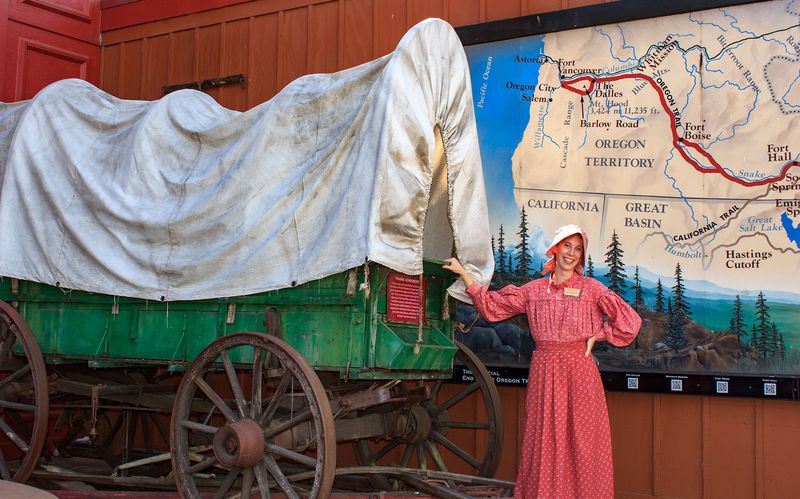
Long before Portland became Oregon’s urban center, Oregon City held the distinction as the first incorporated city west of the Rocky Mountains. Established in 1829 by Dr. John McLoughlin, the “Father of Oregon,” this settlement quickly became the territorial capital.
The West’s first newspaper began printing here in 1846. Pioneers completing the grueling Oregon Trail journey would arrive in Oregon City, their promised land after months of hardship.
History buffs can explore this legacy at the End of the Oregon Trail Interpretive Center, where costumed interpreters demonstrate pioneer skills and interactive exhibits bring the challenging westward journey to life through the stories of those who survived it.
Elevated Explorations: McLoughlin Promenade
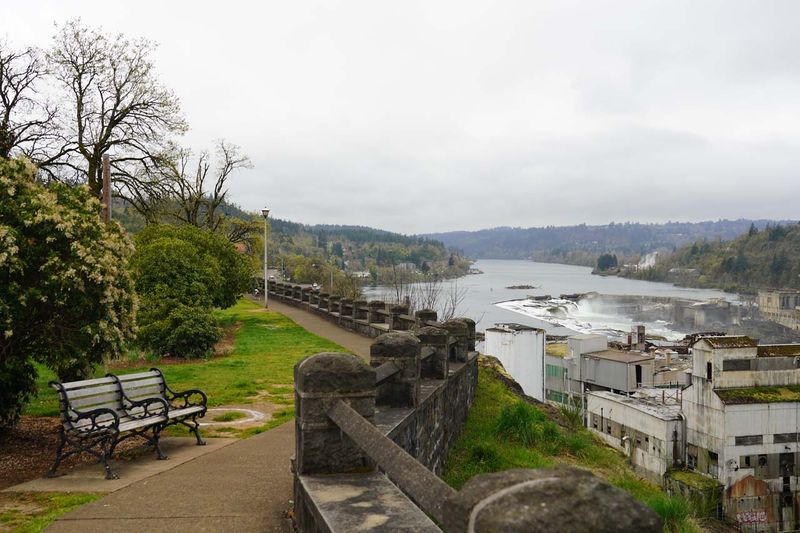
Perched atop the bluff overlooking downtown sits the McLoughlin Promenade, a half-mile scenic walkway offering some of the most spectacular views in the region. Built as a Works Progress Administration project during the Great Depression, its stone walls and lookout points have a timeless quality.
Stately homes from the late 1800s line the route, showcasing the wealth that once flowed through Oregon City. The pathway provides unobstructed vistas of the falls, the historic paper mill, and the Willamette River as it bends northward toward Portland.
On clear days, snow-capped Mount Hood looms in the distance, creating postcard-worthy photographs that capture Oregon’s diverse landscape in a single frame.
Taste of Place: Brewery Blocks and Local Flavors
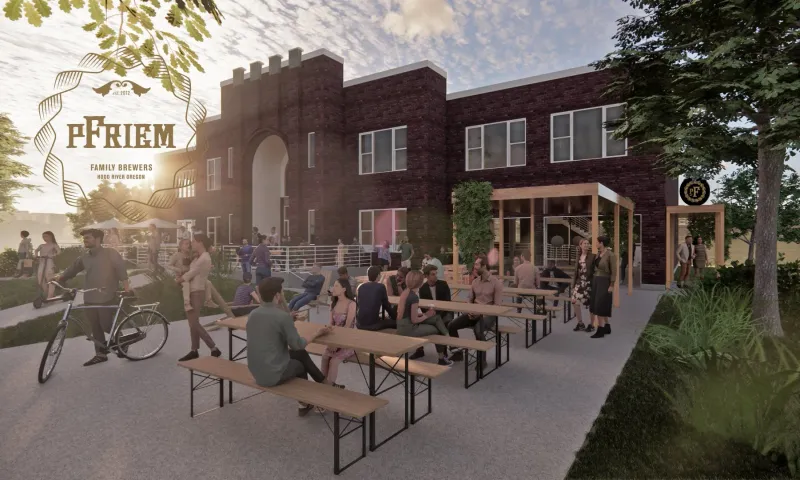
The same water that powers the falls now flavors craft beers at Oregon City’s growing collection of breweries. Converted historic buildings house taprooms where locals gather to sample IPAs and stouts made with Cascade hops and pure Willamette Valley water.
Downtown’s revival has brought farm-to-table restaurants showcasing the bounty of nearby agricultural lands. Chefs incorporate local hazelnuts, berries, mushrooms, and salmon into menus that celebrate Oregon’s culinary traditions.
Weekend markets fill streets with vendors selling everything from handcrafted cheeses to artisan breads, creating a vibrant food scene that connects the city’s industrial past with its creative present—all within earshot of the falls’ constant roar.
Living Museum: Main Street’s Historic Architecture
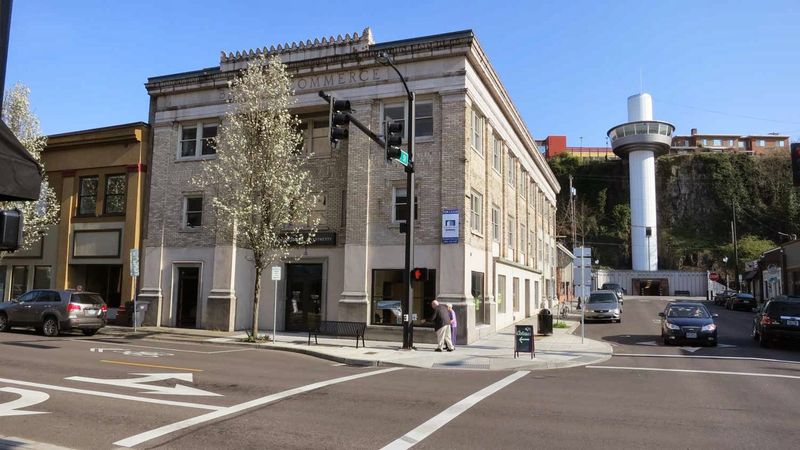
Walking through downtown Oregon City feels like stepping into a living architectural museum. The Main Street district preserves buildings from nearly every era of the city’s development—from pioneer-era structures to Victorian commercial blocks and Art Deco gems.
The Clackamas County Courthouse, with its distinctive clock tower, has watched over the city since 1937. Nearby, the Stevens-Crawford Heritage House offers a glimpse into early 20th-century domestic life with period furnishings and artifacts.
Unlike artificial historic districts created for tourists, Oregon City’s downtown evolved naturally over generations. Each storefront tells part of the community’s story, from the heights of industrial prosperity to periods of economic challenge and recent revitalization.
River Recreation: Paddling the Willamette
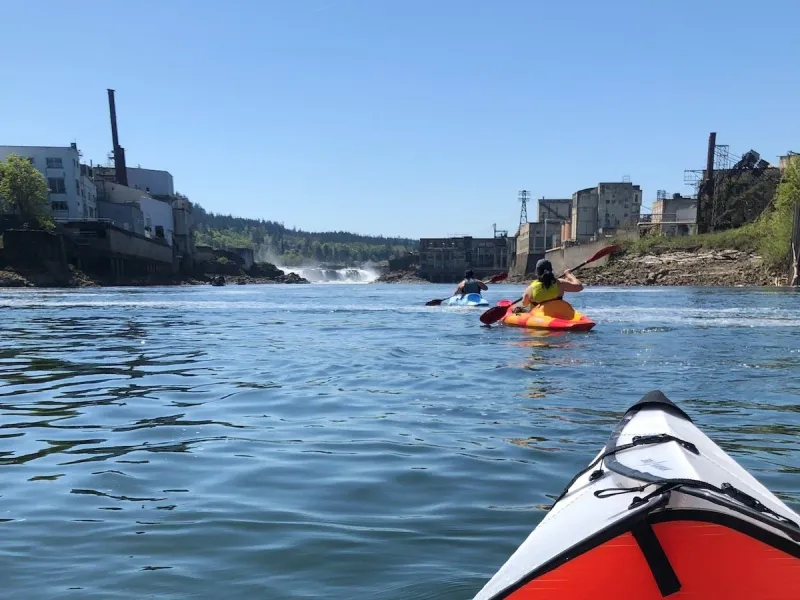
The Willamette River isn’t just for looking at—it’s for playing on! Kayakers and paddleboarders regularly launch from Clackamette Park, where the Clackamas River meets the Willamette, creating a popular recreation hub just downstream from the falls.
Fishing enthusiasts cast lines for salmon, steelhead, and sturgeon along the riverbanks. Some anglers have family connections stretching back generations to when Native Americans fished these same waters.
Riverside trails offer cyclists and joggers miles of scenic paths connecting Oregon City to neighboring communities. During summer months, the annual Great Willamette River Race brings colorful flotillas of watercraft past the city in a celebration of river culture that connects modern recreation with the waterway’s historic importance.
Locks and Legacy: Navigating Around the Falls
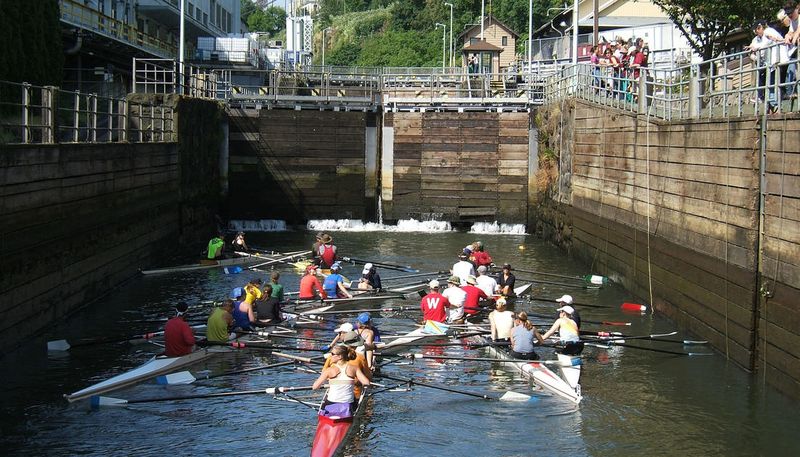
Before modern highways, the Willamette River served as Oregon’s main transportation artery—with one major obstacle: the falls. The Willamette Falls Locks, completed in 1873, created a water elevator for boats, allowing vessels to bypass the 42-foot drop.
These engineering marvels—the oldest continuously operating multi-chambered canal and lock system in America until their closure in 2011—enabled goods to move freely between the fertile Willamette Valley and Portland’s shipping ports. Efforts are currently underway to restore and reopen this historic system.
From Native American canoes to pioneer flatboats and later steam-powered vessels, the story of navigating around the falls reflects the evolution of transportation in the Pacific Northwest.

